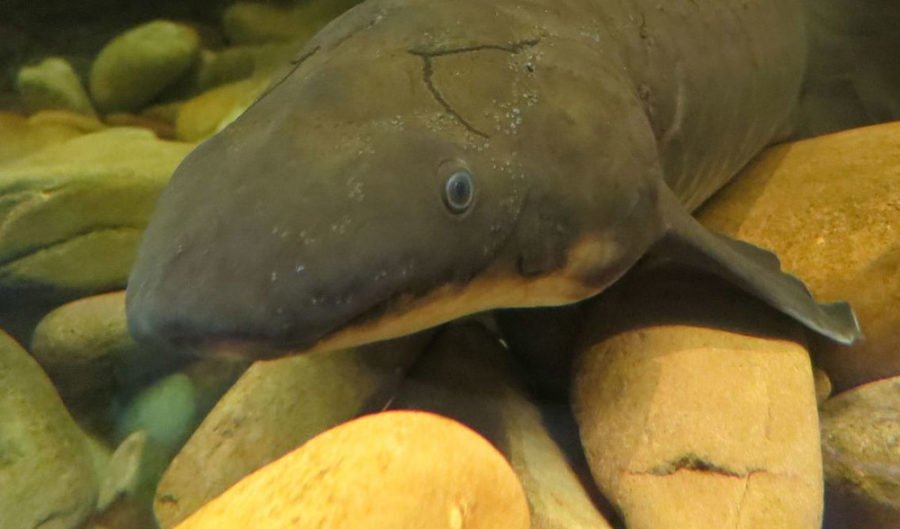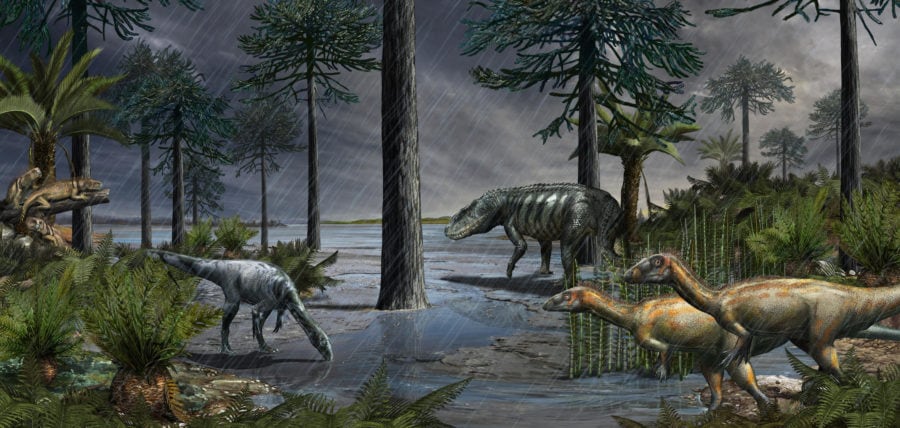New life for ancient predatory fish from the Red Centre

Meet Harajicadectes zhumini, a newly described predatory fish species that prowled the rivers of Central Australia during the Middle-Late Devonian period, about 380 million years ago. Harajicadectes was a lobe-finned fish with bony scales and sharp teeth. It was part of the ancient Tetrapodomorph lineage – the not-so-distant evolutionary ancestors of the first land-walking tetrapods.
The nearly complete Harajicadectes skeleton was discovered in 2016 inside Harajica Sandstone, roughly 200km west of Alice Springs in the Northern Territory.


(Left to right) The type specimen of Harajicadectes zhumini as found in the field in 2016 (an almost complete fish seen in dorsal view), a latex peel of the fossil, and an interpretative diagram; Skull of Harajicadectes zhumini in dorsal view alongside a reconstructed head, plus the location of the Harajica fish beds. Image credits: courtesy Flinders University
Harajicadectes’s most distinctive features are the large openings on the top of its skull, which scientists explain as an air-breathing adaptation. “These spiracular structures are thought to facilitate surface air-breathing, with modern-day African bichir fish having similar structures for taking in air at the water’s surface,” says Dr Brian Choo, a researcher from Flinders University’s Palaeontology Lab.
Palaeontologists have discovered this air-breathing adaptation in other Tetrapomodorph species from the Middle-Late Devonian period. “Large spiracles also appeared in Gogonasus from Western Australia and elpistostegalians like Tiktaalik – the closest relatives to limbed tetrapods,” Brian says. “It also appears in the unrelated Pickeringius, a ray-finned fish from Western Australia, first described in 2018.”
This air-breathing adaptations enabled fish to supplement gill respiration with oxygen from the air – a useful advantage during the atmospheric changes of the mid-Devonian period, which triggered mass extinctions of marine communities.
Fragmentary specimens of Harajicadectes were first discovered in 1973, followed by later discoveries by Melbourne Museum and Geosciences Australia in the 1990s. “This fossil [found in 2016] demonstrated that all the isolated bits and pieces collected over the years belonged to a single new type of ancient fish,” says Brian.


(Left to right) Flinders University palaeontologist Dr Brian Choo with the Harajicadectes zhumini fossil; A life reconstruction of Harajicadectes zhumini in central Australia 380 million years ago. Image credits: courtesy Flinders University
Its name Harajicadectes zhumini derives from the location where the fossil was found – Harajica Sandstone – and “dēktēs”, the ancient Greek word for “biter”. Zhumini was chosen in recognition of Professor Min Zhu, a Chinese palaeontologist who has made significant contributions to the evolutionary history of early vertebrates.
The study was published in the Journal of Vertebrate Palaeontology.



